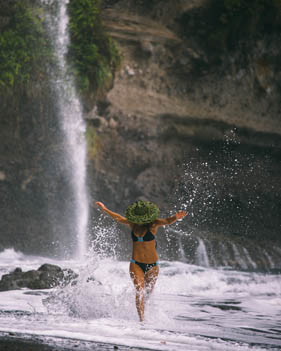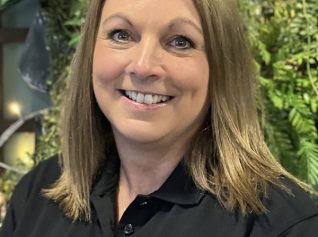Go Dominica for a sustainable experience

To those that live there authenticity is a way of life
The word ‘authentic’ resonates with travelers who engage in multiple experiences in Dominica, but to those who live here, it’s just the way of life!
And Dominica is featured in the World Top100 Sustainable Destinations at ITB this year
Dominica, (pronounced Dom-in-EEK-a) not to be confused with the Dominican Republic, is a quaint young tourism destination yearning for discovery by the traveler seeking a Caribbean island that recognizes nature and cultural heritage as fundamental components to social and economic development.
Rather than wonder if Dominica should be on your bucket list among ITB’s Top 100 Sustainable Destinations, just ask those who have ventured before you. Adventure activities on the Nature Island’s rugged terrestrial and marine terrain automatically engage visitors in sustainable practices.
There are over 300 miles of trails across Dominica to visit nature’s marvel such as the renowned Boiling Lake (second largest in the world), or a short walk to Cold Soufriere, a natural phenomenon where volcanic bubbling water is cold instead of hot.
In addition, Dominica is home to the longest hiking trail in the Caribbean, the Waitukubuli National Trail (WNT) that is purposely designed to engage community livelihood. It passes through villages island-wide, traversing 56 mountain passes, 82 rivers, 7 waterfalls with 600 species of flora and fauna and countless breathtaking vistas on the 115 miles of trail.
On WNT, visitors walk historical paths including secret hiding places and villages that are abandoned. Renowned waterfalls such as Emerald Pool and Middleham Falls can either be traversed along the WNT or visited on separate hikes.
Dominica’s spectacular beauty on land is equally matched underwater and is world renowned for diving among healthy coral reefs. Divers and snorkelers experience ‘swimming in a Champagne glass’ in the renowned Champagne Reef, a volcanic underwater phenomenon.
Whale watching is world class with Dominica’s whales, whose year-round home lies near shore due to very deep waters that reflect the steep terrestrial topography. The mounted Sperm whale skeleton at The Anchorage Marine Mammal Interpretation Center provides visitors with interesting education on the whales.
Visitors who partake in whale and sea turtle watching ventures allow for opportunities to document these species habits to ensure management for their survival. Properties such as Rosalie Bay Resort offer sea turtle watching for their guests and engage in sustainable practices along with Papillotte Wilderness Retreat, Secret Bay Resort, Manicou River and Citrus Creek Plantation, with the latter having an impressive approach to sustainable tourism.
Dominica has a way of keeping visitors active followed by natural remedies to heal their bodies by soaking in natural sulphur spas, in addition to yoga sessions in a forest, river or sun setting, among other holistic wellness experiences http://www.dominicawellness.com
In terms of culture, the island is home to the largest indigenous population in the Caribbean, the Kalinago (called Carib by the European settlers). Visitors can experience living like a Kalinago in their homestay offering and can learn the traditional skills of craft production, canoe making, traditional dances, indulge in local cuisine including making the famous cassava bread at the Kalinago Barana Autê in the Kalinago Territory, among other activities like crayfish hunting which was featured on BBC’s No Kitchen Required television show.
Farm to plate experiences are true examples of the life on Dominica. Residents plant and grow herbs, root crops and vegetables and teach visitors how to prepare a local meal with the end product being consumed. Aimed at controlling the invasive lionfish species on Dominica’s healthy coral reefs, lionfish is now a popular dish on the local menu. Some visitors have actually participated in hunting them so that Dominica’s renowned accolade for health reefs remain intact.
The warm and friendly people, the awesomeness of the vast lush green rainforest showcasing several shades of green and the wholesomeness of the food is the part of Dominica that is the biggest unexpected surprise for first time visitors.
Aside these experiences in the tourism sector, the island is exploring renewable energy and climate change resilient technology in the fight to address the negative impacts of the changing climate on residents in Dominica. Policies and guidelines also play a role in securing financial sustainability given that the business is dependent on the protection of the natural environment. One of many examples established by a local community group is the use of oars along the boat ride to the fragile Indian River ecosystem, where Pirates of the Caribbean was filmed.
With 65% of the island covered in forests (of which 20% are protected lands including the 3 national parks and 2 forest reserves which started from conservation initiatives in the early 1900s), it is not surprising that Dominica is among the World’s Top 100 Sustainable Destinations.
Don’t miss the opportunity to experience how nature and cultural heritage combined with fun, adventure and wellness can influence social development in positive ways.
Go Dominica for sustainable travel! Visit: http://www.responsibletravel.com/holidays/dominica/travel-guide/
 United Kingdom
United Kingdom United States
United States Asia Pacific
Asia Pacific












































BA suspending all Heathrow to Abu Dhabi flights
Unexpected wave rocks cruise ship
Report: Cruise guest died after ship lashed in heavy storm
British teen in serious condition after paraglider collision
JetBlue scraps London Gatwick flights